For Mac and Cheese What Can I Substitute Milk for
If you've run out of milk, does it mean you'll have to remain one of the doubters? Here are 9 substitutes for milk in Mac and Cheese .
Mac and Cheese. Who doesn't love it? If you're not already a fan, knock yourself up a batch at home and get converted.
It's so quick and straightforward to make, but what happens if you've run out of milk? Does it mean you'll have to remain one of the doubters?
Actually, it doesn't. There are other things you can substitute.
Interested? Read on to find out more.
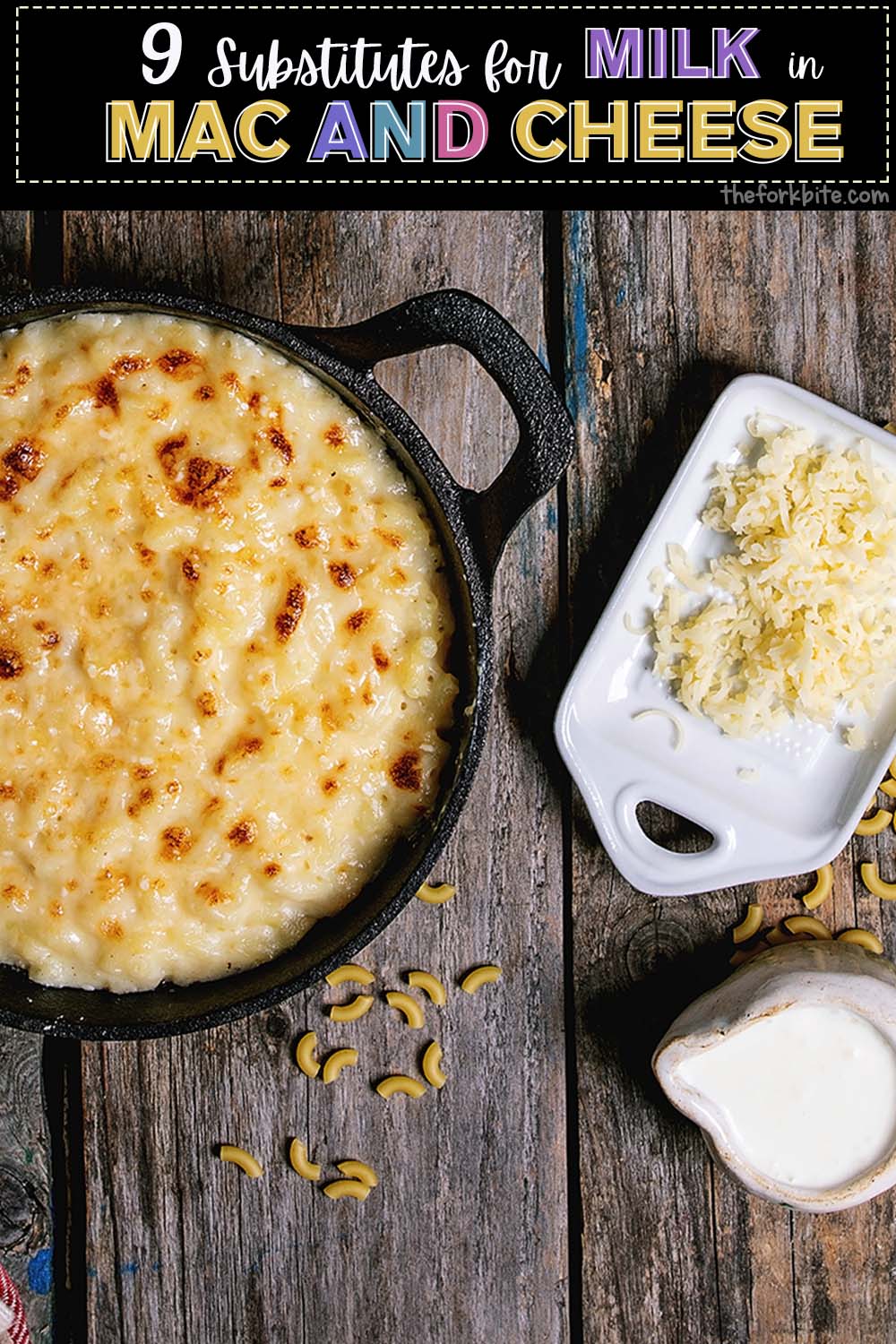
Jump to:
- 9 Substitutes for milk in mac and cheese
- Thickening Kraft mac and cheese
- How to make homemade mac and cheese
- Top tips for making Mac and Cheese
- Interesting recipes with Mac and Cheese
The history of Mac and Cheese
Macaroni Cheese has been one of the USA's favorites for many years.
No one knows for sure how and where it first came about, but it's likely to have originated in Northern Europe – in fact, one of the earliest uncovered recipes was found in 1769.
Thomas Jefferson first brought Mac and Cheese to America, and believe it or not, he served it at a state dinner in 1802.
135 years later, in 1937, Kraft boxed it and started selling it during the Great Depression.
Today, it is one of the US's staples and is available in several varieties.
But good as the store-bought stuff is, it can't hold a candle to homemade Mac and Cheese.
9 Substitutes for milk in mac and cheese
Okay, let's now suppose that you've done the unthinkable and run out of milk.
You don't necessarily have two bin your dreams of homemade Mac and Cheese. – you do have options.
1 Try Mac and Cheese with Buttermilk
Buttermilk is not just a plausible substitute for milk when making Mac and Cheese; it actually takes this scrummy dish to another level.
How it works:
- It adds so much creaminess it's unbelievable, and it also gives another tangy hint of flavor to the taste.
But do you know what buttermilk is?
You would be forgiven for thinking that buttermilk is a combination of butter and milk. It would be a fair guess going by the name.
However, that is incorrect. Buttermilk is the fluid that is left over when churning butter.
It's quite thick, has a slight tanginess about it, and can be kept considerably longer than regular dairy products, including ordinary milk.
It stores well and is quite handy which means, you can keep any leftover around and use it to make Mac n Cheese again and again.
2 How about Mac and Cheese with sour cream?
Another alternative to either ordinary milk or buttermilk is sour cream.
How it works:
- It will also give you a lovely creamy texture as per buttermilk.
- The fact that it has a slightly sour taste means that your cheesy delight will have a little zest to its taste, which is all to the good.
- It's so good that many Mac and Cheese recipes call it up on purpose.
The only disadvantage to using sour cream is if you are watching your weight. It's higher in calories than both ordinary cow's milk or buttermilk.
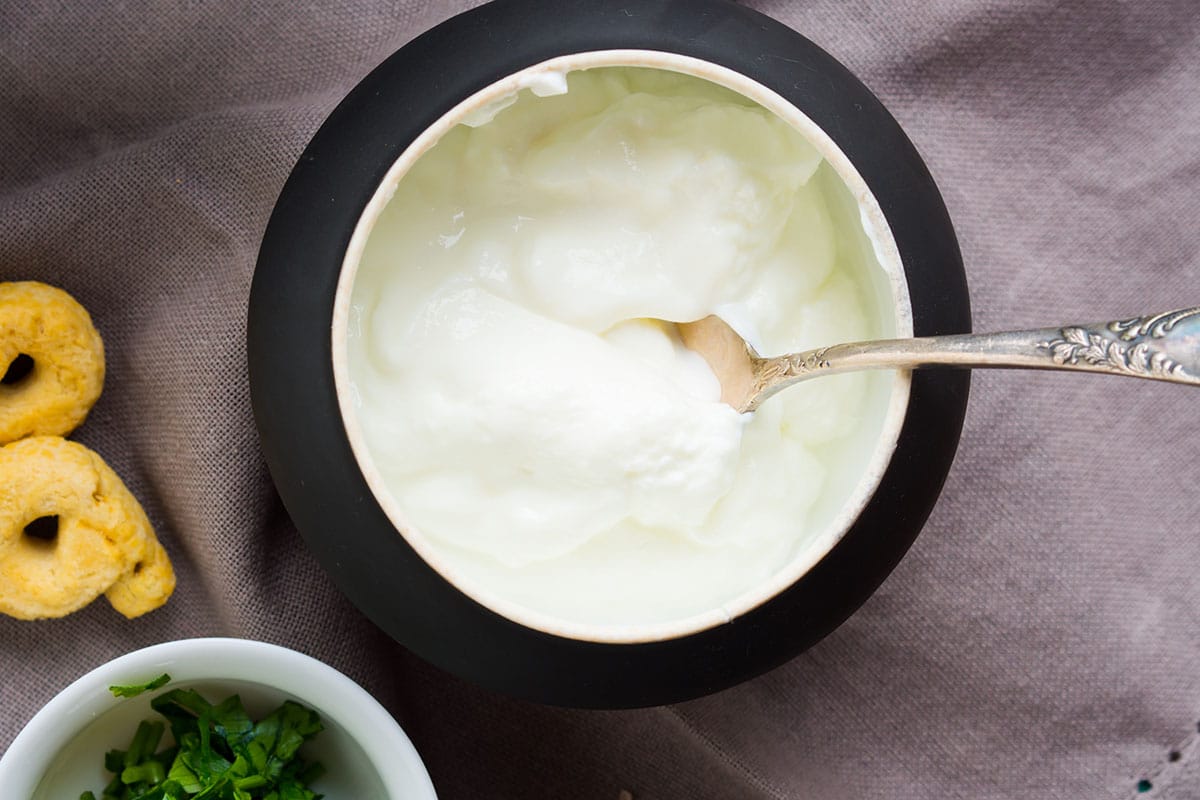
3 Using plain yogurt to make Mac and Cheese
Good old plain yogurt is a much healthier option than sour cream. For me, Greek plain yogurt is the best, and there are plenty of brands from which to choose in the stores.
How it works:
- Make sure it's plain, though. It imbues your Mac and Cheese with great creaminess and a little tang to boot.
- But as I say – make sure it's plain yogurt. A fruit-flavored one won't hack it.
- Plain Greek yogurt gives you the best results both in terms of taste and texture.
The other great thing about Greek yogurt is that it is so healthy.
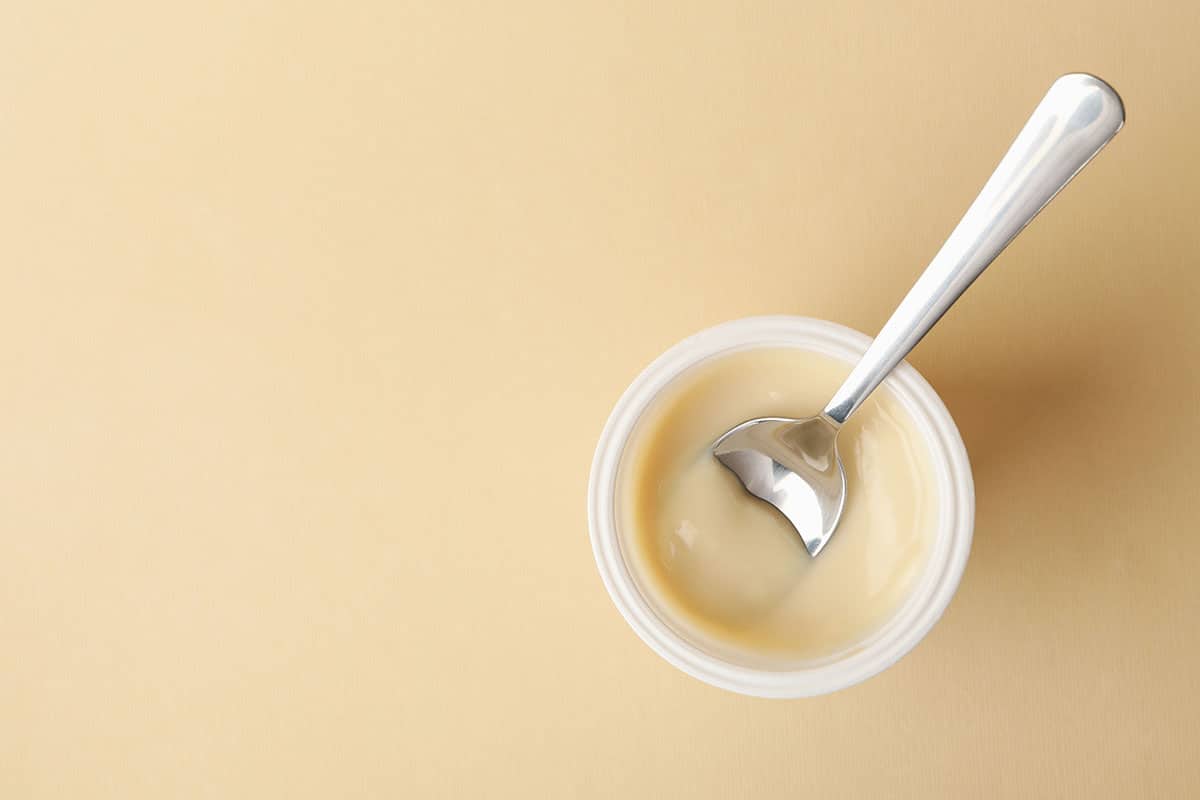
4 Opting for heavy or whipping cream
If you're looking for a use for that carton of heavy cream you've got in your fridge, adding it to Mac and Cheese will work well.
How it works:
- The only thing you will notice is that the texture won't be as thick as it would have been if you added sour cream, and you'll also lose that slight hint of tanginess, as ordinary cream is quite bland.
- Of course, any cream, be it sour, heavy, or whipping, will add lots of calories to your dish, so for anyone on a diet, it's a bit of a no-no.
- But sure is that heavy cream will add creaminess and tastier cheese sauce to your mac and cheese.
However, if push comes to shove, it is a good milk substitute.
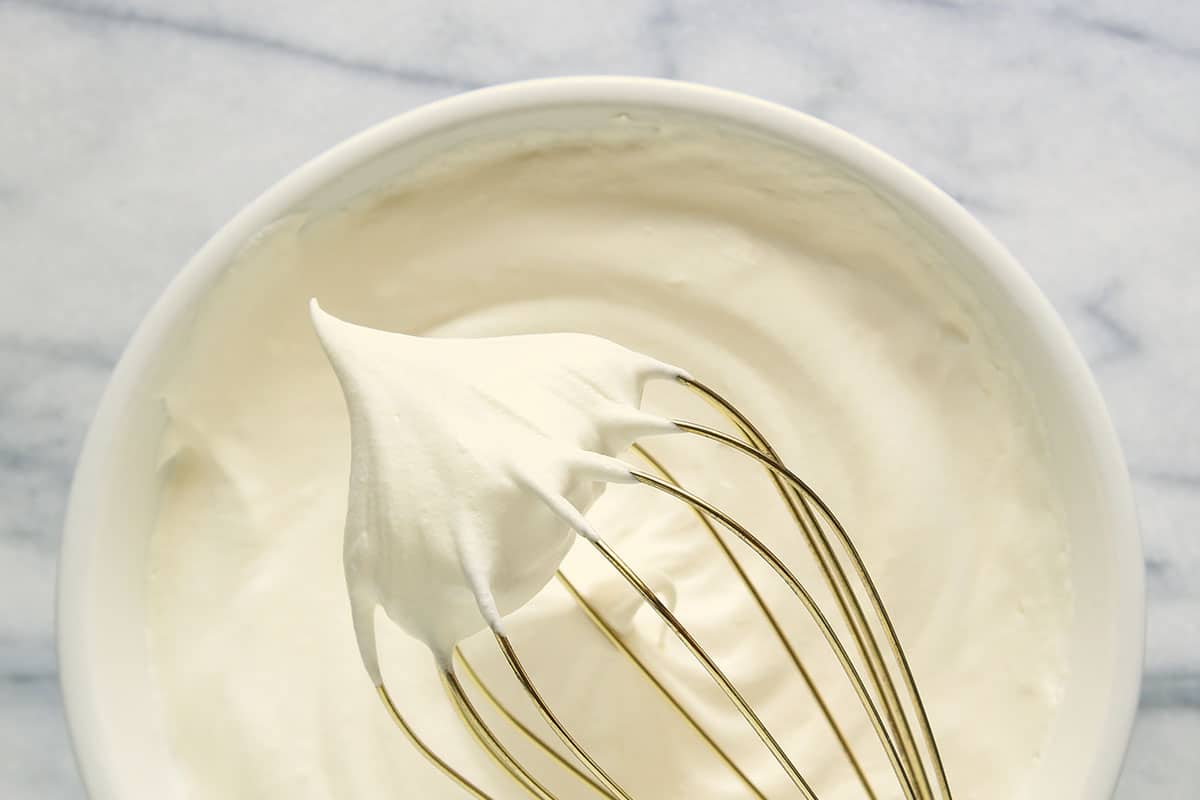
5 Make way for the butter
Most Mac and Cheese recipes call for both milk and butter. But if you have run out of milk, you can always double up on the amount of butter you put in.
You'll also need to add a few drops of water to make up the liquidity. Just gradually add the water, then you can add more if it's needed.
Okay, okay, okay. I get it. You, calorie counters, won't want to be adding huge dollops of butter to your diet.
But if you're desperate for your hit of Mac'n Cheese and you don't have any of the other substitutes available – needs must when the devil drives.
My husband makes a mac and cheese with no dairy. He just mixes the following:
- One cup of sharp cheddar
- half a pound of macaroni (cooked and drained)
- 2 tbsp of butter
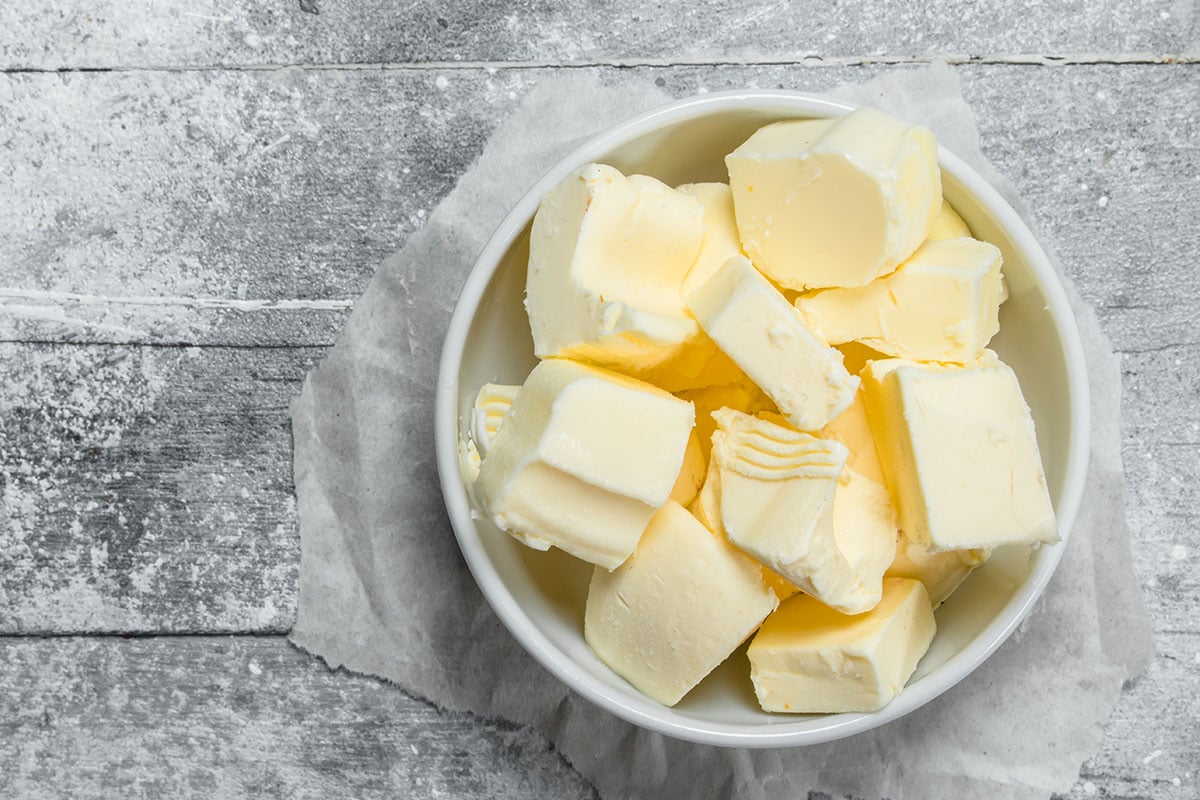
6 The cream cheese option
As a substitute for milk, cream cheese works pretty well with Mac'n Cheese.
How it works:
- It will give you that lovely rich texture you're looking for, and it also lends the right flavor alongside the other ingredients.
- If you chase up a few different recipes, you'll find that many of them specify using cream cheese in the first place. It works really well.
The only thing to be aware of, which you probably already know if you are a calorie counter, is that cream cheese is quite heavy when it comes to fat and calorie content.
7 Going down the evaporated milk route
Evaporated milk can be an excellent substitute for ordinary milk. It doesn't have as much water as cow's milk does and therefore produces a lovely creamy Mac and Cheese sauce.
How it works:
- If creaminess is your thing, evaporated milk is the way to go. Many people use it not as a substitute but as a first preference.
8 Did you say chicken broth?
Chicken broth isn't exactly milky, so it's probably not the first thing that springs to mind when you're considering a substitute for milk.
How it works:
- Gradually add the chicken broth, start with less, and add extra if needed.
- One thing to be wary of is that it will change the taste of your Mac and Cheese.
- as it lacks in milkiness, it more than makes up for in terms of savoriness.
However, if you have a savory tooth, it may not be a bad thing, but I would suggest you add it a little at a time to strike the right balance.
9 How about non-dairy substitutes?
If you're worried about calories, or you are a vegan or someone who can't tolerate lactose, you can always use a non-dairy milk substitute to make your Mac and Cheese.
There are plenty of other types of milk available such as cashew, oat, and soy. I would tend to shy away from coconut milk, however. Mac and cheese and coconut? No, thank you.
If you are a vegan or are lactose intolerant, ordinary dairy cheese will be a problem. It's easy enough to around, though, by using a product from the Daiya dairy-free range.
Let's just take a few minutes to look at some of the dairy-free milk options.
Various dairy-free milk options
Because of all that lovely cheesiness in Mac'n Cheese, you can get away with using several of the non-dairy milk options.
However, you need to taste test before you use it. One thing to bear in mind is that when you reduce sauces, their flavor intensifies.
It might be good or not so good depending on whether or not you liked it in the first place.
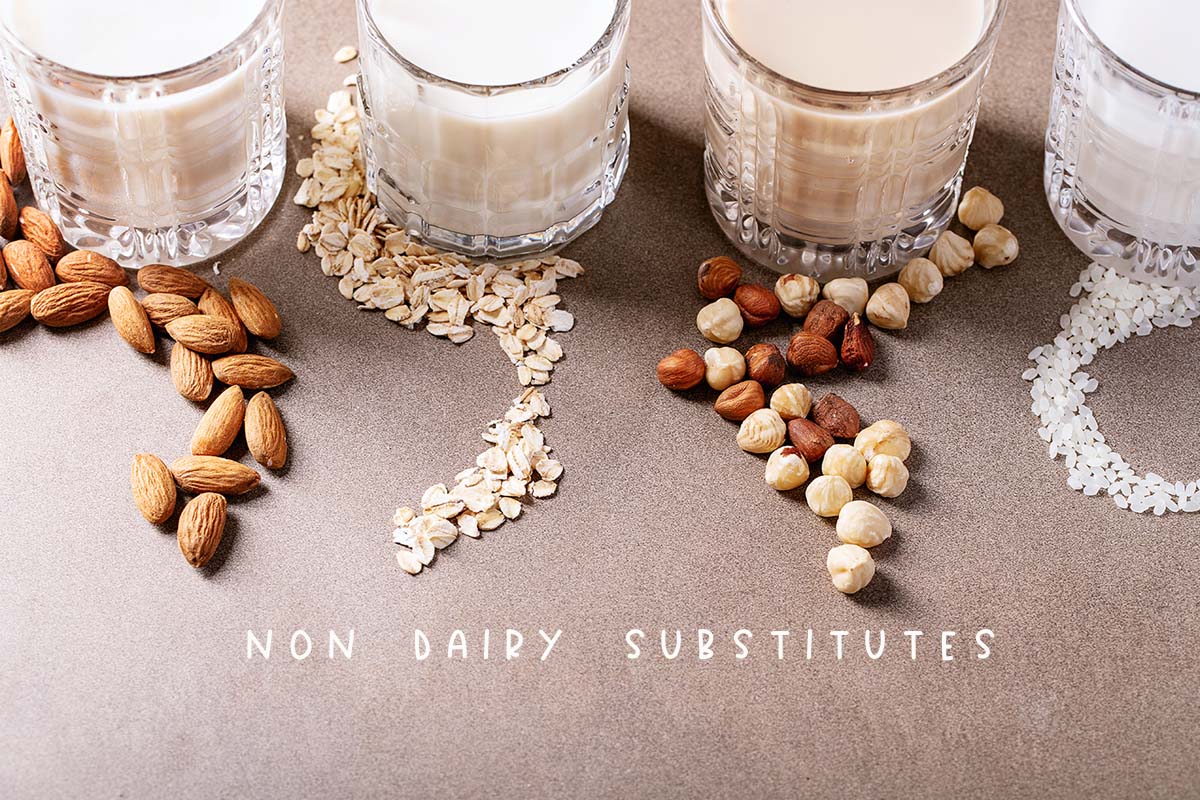
1 Rice milk
I have heard it suggested that rice milk is the nearest to cow's milk when it comes to flavor.
However, like many of these dairy-free milk substitutes, it's quite thin, so it's not very suitable for making some savory sauces such as Alfredo, Bechamel, or Hollandaise.
You can get away with it when making Mac and Cheese if you increase the amount of cheese you use. You have to find a balance.
From the nutritional angle, rice milk contains less protein than its almond or soy relatives.
2 Soy milk
One of the first non-dairy milk products sold in the US was made from soy. Given the fact that we grow lots of soy, we borrowed the idea from Asian countries.
As with rice milk, soy milk has a pretty neutral taste, so you can use it to make many sauces, bearing in mind that, as the rice product, soy milk is quite thin.
Nutrition-wise, milk made from soy contains nearly as much protein as that of cow's milk.
However, it is less flat and has no cholesterol. Soy milk products on sale today are a reasonable sauce of calcium and are often fortified with vitamin B12.
3 Oat milk
Thanks to coffee shops using oat milk to make vegan cappuccinos, on account of its thick texture and the fact that it froths beautifully, it now has quite a high profile here in the US.
As with almond and soy milk, oat milk also has a very bland flavor and is often used for making béchamel sauce.
4 Coconut milk
As I mentioned earlier, coconut milk is not one I would choose for making Mac and Cheese.
Unlike its blander cousins, it has a more distinct coconut-type flavor, which I think limits its use to making fruit-based sauces or pouring over your morning cereal.
As far as canned coconut milk is concerned, this is even worse in terms of coconut taste. For me, I limit its use to making Thai curries.
There are various other types of non-dairy milk available in stores, and if you'd like to read more about them, check out this article on the Healthline.com website.
Non-dairy milk in baking vs sauces
Problems with separation
When cooking with non-dairy milk substitutes , baking is far more forgiving than pan cooking on your stovetop.
You should sample all the various types of milk subs available in the supermarkets to determine which ones produce the best results for making Mac and Cheese.
Another thing with some non-dairy milk substitutes is that they can separate when they are boiled.
It all depends on the level of emulsifiers they contain. For this reason, I would suggest you avoid using rice milk.
If you check the labels on non-dairy milk, you will come across the word "lecithin." This is an emulsifier that is often used to prevent separation during cooking.
Because of the risk of separation during cooking, I would advise you to add any non-dairy milk near the end of the cooking process.
If it does separate, I recommend adding a little cornstarch mixed with water which may thicken up the sauce and give it a better consistency.
Sweetened or unsweetened non-dairy milk
Although it might sound a little obvious when you shop for non-dairy milk to go in a savory sauce like Mac and Cheese, look for unsweetened.
The other thing to watch out for is that some soy milk is flavored with vanilla. It's not really something you want in your Macaroni Cheese.
For my money, it's always best to used unsweetened non-dairy milk regardless of whether you're making a savory or sweet sauce.
It leaves you firmly in the driving seat when it comes to achieving the flavor note you want.
As a substitute for milk, cream cheese works pretty well with Mac'n Cheese. It will give you that lovely rich texture you're looking for, and it also lends the right flavor alongside the other ingredients.
If you chase up a few different recipes, you'll find that many of them actually specify using cream cheese in the first place. It works really well.
The only thing to be aware of, which you probably already know if you are a calorie counter, is that cream cheese is quite heavy when it comes to fat and calorie content.
Thickening Kraft mac and cheese
When making cheese sauce, you start creating a straightforward béchamel sauce, which is basically melted butter, flour, and a little milk or milk substitute.
If you aim to thicken a store-bought craft Mac and Cheese, you need to go back to the béchamel basic.
There are several ways of going about this.
Way 1
The simplest way of thickening the cheese sauce without impairing its flavor is to lightly simmer it over medium heat to reduce, making it thicker and intensifying the taste.
Way 2
Another way of thickening Kraft Mac and Cheese is to make up a new batch of béchamel sauce in a separate pan.
Once you've got it to the desired thickness, add it to the store-bought product.
Remember that you've altered the balance of the ingredients, so you may need to add more cheese.
Way 3
Another way of thickening store-bought Mac and Cheese is to use cornstarch or flour mixed with a bit of water.
- Mix it separately in a small bowl or cup with a couple of tablespoons of the cheese sauce stirring all the time until it is smooth.
- Add the mixture to the Mac and Cheese and stir to distribute evenly and thicken the final dish.
- Should the sauce become too thick while it simmers, turn the heat down to low and add a little milk or milk substitute a little at a time stirring all the while until you get the desired thickness.
How to make homemade mac and cheese
Now it's time to give you some basic instructions on how to go about making your own homemade DIY Mac and Cheese.
Ingredients
- 8 oz (or 2 cups) macaroni
- 2 tsp salt (added in cooking water)
for the cream ingredients:
- ⅓ cup heavy cream
- ½ tsp mustard powder
- ⅛ tsp garlic powder
- ⅛ tsp onion powder
- 1 ⅓ packed cups (5 oz) grated sharp cheddar cheese
- a pinch of cayenne pepper (optional)
- a dash of hot sauce (optional)
Step by step instructions
Step 1
- Heat a medium pan of water (depending on how many you're cooking for) on your stovetop to boiling point.
- Add the macaroni or pasta of your choice and salt to taste. Lower the heat a little and gently boil the pasta until it is al dente.
Step 2
Take the pan off the heat and drain the pasta into a colander.
Step 3
Place the pan back on your stovetop on a medium heat setting and add the first 4 cream ingredients (or you can follow a simple recipe here). When the mixture comes to a boil, simmer gently for sixty seconds.
Step 4
When a minute has passed, add the cheddar cheese and any spices you desire. Stir the cheese until fully melted and blended with the other ingredients.
Step 5
- Add the pasta into the sauce and stir until the pasta is evenly coated with the cheese sauce.
- Remove from the stovetop, test taste, and if necessary, add salt-and-pepper. Serve and enjoy.
Make it gluten-free
You can substitute your favorite sturdy gluten-free noodles, such as a corn and quinoa blend.
How to reheat the leftover?
Mac and cheese is best to serve when it's hot and freshly cooked, but you can reheat it in the microwave.
How to do it:
- Transfer the leftover mac and cheese into a heat-proofed bowl (the amount depends on what you're going to use).
- Add one tbsp of milk per cup, you can also use half and half or heavy cream if you wish to add more creaminess and flavor into it. Optional: Add extra grated cheese or bacon bits for extra yumminess.
- Cover the bowl with saran wrap or an inverted bowl. Put it in the microwave and nuke it slowly in 60 seconds.
- After that, stir the mac and cheese to distribute the heat and continue to heat for 30 seconds increments until you reached the desired temperature.
Note: Don't overdo when reheating mac and cheese; the ingredients are more likely to separate if they are overheated. Gradual reheating is recommended.
Spicing up Mac and Cheese
Mac and cheese in their own right is absolutely delicious, but if, like me, you like to push the boundaries a little in the kitchen, why not spice it up a little?
I do this to both my homemade Mac and Cheese or store-bought if I'm in a rush and haven't had time to make my own.
Favorite add-ins and toppers
Here are a few of my favorite ingredients that I sometimes used to give my Mac and Cheese and Extra Flavour Boost.
-
- Black pepper
- Breadcrumbs (superb when sprinkled over the top and flashed under the grill for a gorgeous crispy topping).
- Canned tuna
- Chopped onion
- Diced vegetables or whole peas
- Garlic powder or salt
- Ground beef – yummy
- Sliced ham or hotdogs
- cooked bacon bits
- Shredded Parmesan or Romano cheese. These also work well when added along with breadcrumbs and flash grilled.
- Hot Sauce
- Ranch dressing
- Tomato ketchup – especially good with warmed up leftovers
To borrow some words from the Sound of Music – These are a few of my favorite things. I'm sure the whole Von Trapp family would agree. Why not add some of your own?
Top tips for making Mac and Cheese
Tip 1
Always use quality cheddar cheese – it is, after all, the main flavor. By now, you will know that I prefer strong, piquant flavors, so I prefer to use extra mature cheddar for a great depth of taste.
Tip 2
Grate your cheddar. When you buy pre-grated cheddar, it has been treated with a cellulose or starch coating (a sneaky ingredient hiding in shredded cheese), which prevents the shreds from clumping together.
In my opinion, this interferes with the creamy texture of the sauce.
Tip 3
Use the best pasta. The word "Mac" when used in Mac and Cheese is a shortening for macaroni. However, if you want to, you can use other kinds of pasta too as long as they are of good quality.
Stay away from long thin pasta like linguine or spaghetti and go for something with a larger surface area like campanelle, pasta shells, or of course, the classic elbow macaroni.
The larger the surface area, the more of that lovely creamy sauce will be captured.
Tip 4
Have all your ingredients pre-prepared and ready. It doesn't take long to make Mac and Cheese, and it tends to come together rather quickly.
Tip 5
Don't over boil the cream. If you do, you will lessen the moisture content, and instead of being lovely and creamy, the cheese will become stringy.
Tip 6
Boil the sauce for 60 seconds precisely. Use a timer, and as soon as it goes off, remove the pan from the stovetop, and your sauce will be perfect itself.
Interesting recipes with Mac and Cheese
- Mac and Cheese Breadsticks
- Trisha Yearwood Crockpot Mac and Cheese
- Mac and Cheese Balls
- Baked Mac and Cheese
For Mac and Cheese What Can I Substitute Milk for
Source: https://www.theforkbite.com/substitutes-for-milk-in-mac-and-cheese/